Log: Memory
10.11.2025 // Aeolipile
Rabat, Morocco ⬔
I just came across the first recorded steam engine, the Aeolipile, also known as Heron's engine. It seems like it might not have been used for anything practical at the time.
It blows my mind to imagine that such a device existed so far back. In some sense, it represents to me "what could have been". Like, in an alternative past, what would the world look like had we explored this device's capacities further at the time? Yet, we did not, and it would take another 1500 years until the idea reappeared once more.
I wonder what inventions or ideas today may prove to be similar to the Aeolipile.
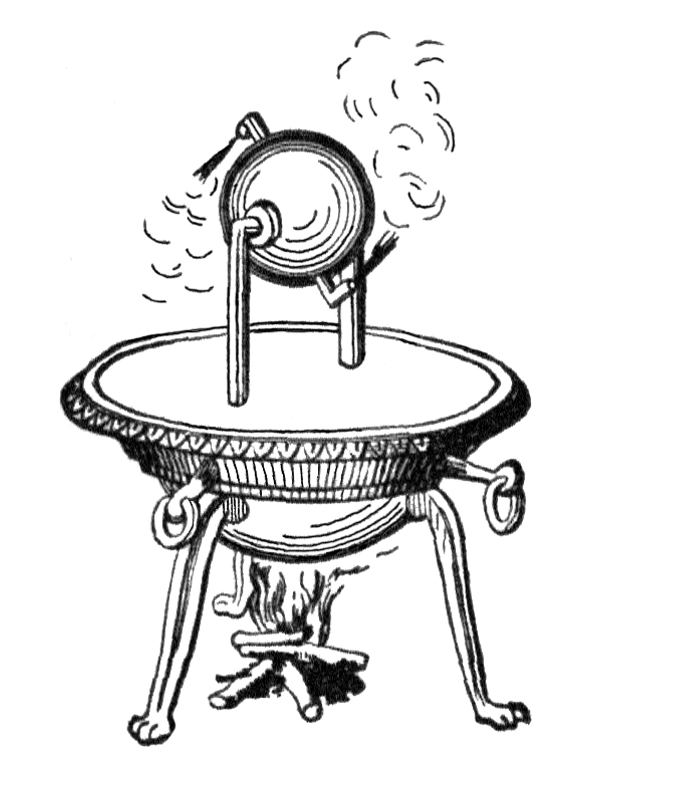
- Marc
24.07.2025 // Thinking of Stonehenge in Manhattan
New York City, United States ⬔
The past four weeks have taken me from Bath to London to New York, New Jersey, and Pennsylvania—leaving me with just enough time to catch my breath. Amidst the hustle and bustle, I had a few parting thoughts that have stuck with me about a small day trip we did in England, thoughts which are broadly pertinent to travel and living generally.
Shortly before leaving the UK, we went to Stonehenge and it brought me back to a younger self who was just beginning to discover the world. Up to the very day we went, I had doubts about whether to make the trip over. It is a busy time as we approached the end of our visit to Bath. Lots of travel awaited, and as travel accumulates in my past and future, I begin to enjoy static moments more and more.
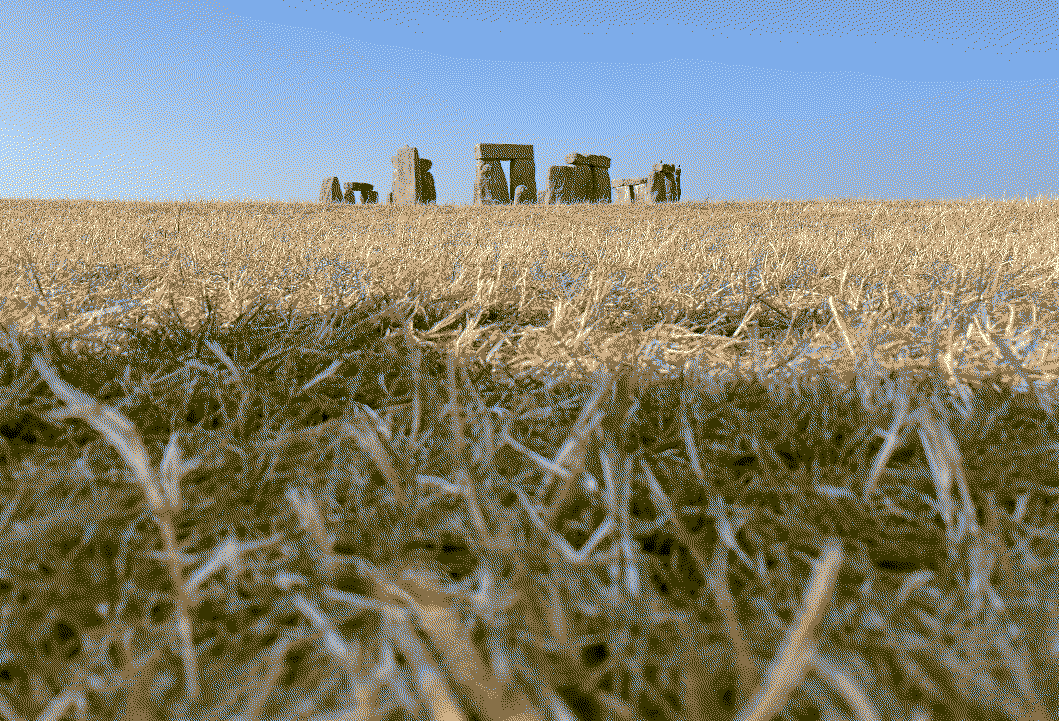
Nonetheless, the clutter of logistics, work, and everyday tasks can also cloud vision. In the end, how could I not go? The site was less than two hours away and there are no guarantees I will ever have the chance to see it again. The awareness of a present both fleeting and latent with possibility is something that has always characterized my outlook on life. And yet, there are so many forces in our every day that increasingly try to obscure the value of experiencing, living, contemplating. Deciding to go to Stonehenge was a reassertion that each day and each minute is not to be taken for granted.
Beyond the inertia of banality, there is also cynicism: why go? Isn't it just an overhyped commercialized sort of place? These are the whispers and judgements that try to chip away at the value of something because it is too popular, too well-known. I know that my younger self was almost deaf to this type of cynicism. After being denied mobility and possibility for so long, the inherent of value of discovering and exploring and learning and experiencing seemed too obvious. It is this instinct that has driven me to go rogue on trip itineraries, like that time I refused to leave Istanbul without visiting the Hagia Sophia and the Blue Mosque. Today, I am proud that at sixteen I had the foresight to do that; I haven't been back to Istanbul since.
In Walker Percy's "Loss of Creature", the author reflects on how modern institutions, such as school or mass tourism, and the expectations we develop as a result of being embedded in them, alienate us from that which we wish to encounter and access. Percy toys with ideas on how to reclaim experience, eluding cliché, disappointment, and cynicism. Growing up, the inherent value of experiences revealed itself to me as an obvious contrast to the relative scarcity, constraint, and struggle I had had to live through. As my access to the world has swelled, have I lost sight of this?
The special feeling that still springs within, whether at the foot of Stonehenge or on the crisscrossing streets of Manhattan, makes me think not. I still feel like the luckiest person in the world, just like when I saw the rising domes of the mosques in Istanbul or the black sand volcanic beaches of Guadeloupe—-the drive to live is still there, even if I have to make a greater effort to tear down some of the pressures and expectations that adult life has brought with it.
- Andrea
01.06.2025 // Café colombiano
Bath, England ⬔
For most of my (relatively brief) adult life, I took a bit of pride in being the Colombian who did not drink coffee. The association between coffee and Colombia is almost as tight as that of spicy peppers and India or potato and Eastern Europe. And yet none of these quintessential crops are "native". The potato and the peppers are technically "ours", they are native to the Americas. Meanwhile, coffee is traced to the Arabic Peninsula and the Horn of Africa. I cannot deny, however, that the "tinto" (a watery black coffee) is as near and dear to Colombians as tomatoes are to Italians. Nor can I deny that my childhood memories of lazy Saturday mornings are steeped in the aroma and flavor of a very milky café con leche. Almost everyone in my immediate family grew up drinking coffee (even if in very low doses).
Still, beyond the nostalgia for the childhood café con leche accompanied by a cheesy arepa and huevos pericos, I did not understand the general public's devotion to coffee. That it was necessary to drink coffee to get through a day was really off-putting to me; I did not want to depend on a drink to live my life. And then, when I first encountered all the different contraptions for "fancy" coffee brewing as a student in Chile, I was dismissive out of ignorance.
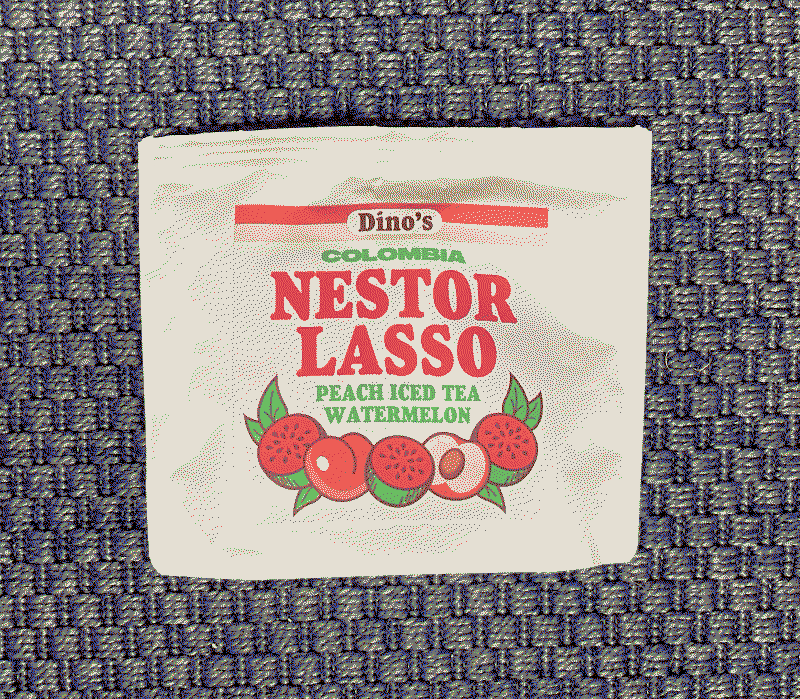
Coffee continued to be like a distant cousin seen only at family gatherings until the day I moved to Sweden. From the Arabian peninsula to South America to Scandinavia—the coffee plant has journeyed far. However, sitting in a cozy café in Stockholm with a warm kanelbulle on a dark cold evening, the prospect of a brygkaffe didn't seem all that bad. I could then understand why the Finnish and the Swedish were the top coffee consumers in the world.
Having coffee in Sweden is how I discovered the very first reason why I did not "get" coffee. The coffee we drink in Colombia, and much of Latin America, is incredibly watered down. Not only is our coffee flavorless because of this, but it is also intolerable to drink any stronger because of how burnt the widely commercialized coffee grounds are. In Colombia, we have long been left with bottom barrel coffee, and families have done the best to make it last on a tight budget.
But, it has not always been that way. Arguably, the status quo of Colombian coffee is a relatively new state of affairs.
After discovering that drinking coffee could truly be pleasurable in Stockholm, I was much more open to reencountering coffee in my own hometown. In Bogotá, Marc and I hopped from café to bookstore to café to art gallery, and gradually we discovered what a pour-over was, what a V-60 was, what a Gesha was. At one of the coffee shops in the historic Candelaria neighborhood, the owner shared his own coffee journey with us as he brewed our cups. After growing up in one of the most troubled neighborhoods of Bogotá, he only got his very first taste of excellent Colombian coffee while abroad in South Korea. Shocked, he became convinced that all Colombians should be able to taste and enjoy what was being massively exported away as a luxury. After training as a barista, he brought café de especialidad to his neighborhood, first, before opening up a second shop in Candelaria.
So, what was Colombian coffee like before all the good beans were exported away? The answer lay much closer to me than I imagined. Wanting to share the delicious coffee with my family of avid coffee-drinkers, I invited them to a drip coffee demonstration at Xue Café. I was excited to see their reaction, but instead of the shock of novelty, it was the warm surprise of an unexpected reencounter that animated their conversation. They insisted: this was the way my great-grandfather brewed coffee. No, not with a ceramic V-60 nor with specialized water pourers and electronic scales. He fashioned his own type of "pour-overs", using cloth filters, a kettle over a fire, and the beans he had grown, picked, dried, and roasted himself. My family had not tasted a coffee like the one they were having in this specialty coffee shop since those days back on the farm.
It had only taken two or three generations for most Colombians to lose access to good quality coffee. Only now the tide is beginning to slowly turn, but good coffee remains unaffordable to many and often perceived as "fancy" and, ironically, as "foreign" and "strange".

Last year, Marc and I attempted to brew our own pour-over or drip coffee for the first time. When we left Colombia for Cyprus, we brought some coffee grounds with us, as a way of bringing along a little piece of home and its aromas. We began our experimentation with some grounds from a local Limassol roaster, wanting to save the coffee from Colombia for when we got the processes just right. We did not know then that coffee brewing would become a multi-month journey. Nor did we expect that we would end up hand-grinding our own beans.
There are plenty of issues with how the world drinks coffee, the environmental and socioeconomic impact of it all, especially when it is Nestle or another unscrupulous company that commercializes the coffee (and many "fancy" specialty shops and roasters are not at all exempt from this). But, I have also seen many small shops, roasters, and artisans fighting to make coffee fairer for everyone. It is not just about putting a nice story or name to a coffee bag. They display prominently how much coffee farmers are paid and lay bare what their profit margins are. Under these conditions that foster transparency and solidarity, when I walk into a coffee shop and see the names of the farms, the places, and the people who work hard to make coffee possible, it makes me feel a little closer to home.
- Andrea
04.04.2025 // Pequeña bitácora bibliográfica I (08.2024 - 03.2025)
Uffculme, England ⬔
Around the time we first began to build Comma Directory, I acquired a little notebook which I wrote about in my very first post: "The Small Bibliographic Log" from the independent Colombian press, Rey Naranjo. Almost eight months later, the log is now filled to the brim with the readings and thoughts that have accompanied me from Colombia to Cyprus to Sweden to France, and finally, to England.
To commemorate the completion of my first pequeña bitácora bibliográfica, I have picked out a selection of quotes, some of them I have had to dig out of the tight corners that I stuffed them into as I ran out of space on the page. And so, ...
"Recuerdo que [...] escribía sobre toda la superficie del papel, sin respetar ningún margen. Eso me daba la sensación de llenar completamente un vacío".
– Mario Bellatin, El libro uruguayo de los muertos
"At the end of my patient reconstruction, I had before me a kind of lesser library, a symbol of the greater, vanished one: a library made up of fragments, quotations, unfinished sentences, amputated stumps of books."
– Umberto Eco, The Name of the Rose
« Nous voyons ces filets, leur beauté, leur appartenance tout à la fois à la liberté et à la capacité de capturer, oui capturer. »
– Franklin Arellano & Julia Bejarano López, Entretierras
"Suspended over the abyss, the life of Octavia's inhabitants is less uncertain than in other cities. They know the net will last only so long."
– Italo Calvino, Invisible Cities
"What is the consciousness of guilt but the arena floor rushing up to meet the falling trapeze artist? Without it, a bullet becomes a tourist flying without responsibility through the air."
– Richard Condon, The Manchurian Candidate
« Est-il aucun moment
Qui vous puisse assurer d'un second seulement ? »
– Jean de La Fontaine, Fables Choisies
« Il faut sinon se moquer, en tout cas se méfier de bâtisseurs d'avenir. Surtout quand pour bâtir l'avenir des hommes à naître, ils ont besoin de faire mourir les hommes vivants. L'homme n'est la matière première que de sa propre vie. »
– Jean Gino, Refus d'obéissance
"Whatever he did allowed him to be told [...] that he indeed existed, that he was not, as he had always dreaded, a figment of his own imagination, or of God's imagination, who disappeared when the lights went out."
– Richard Condon, The Manchurian Candidate
"¡Morir, Dios mío, morir así tísica a los veintitrés años, al comenzar a vivir, sin haber conocido el amor [...] morir sin haber realizado la obra soñada, que salvará el nombre del olvido; morir dejando al mundo sin haber satisfecho las millones de curiosidades, de deseos, de ambiciones [...]"
– José Asunción Silva, De sobremesa
"Pienso, antes de ponerme polvos
que aún no he comenzado
y ya estoy por terminar".
– María Mercedes Carranza, El oficio de vivir
« Elle rêvait aux palmiers droits et flexibles, et à la jeune fille qu'elle avait été. »
– Albert Camus, L'exile et le royaume
"I think here I will leave you. It has come to seem
there is no perfect ending.
Indeed, there are infinite endings.
Or perhaps, once on begins,
there are only endings."
– Louise Glück, Faithful and Virtuous Night
"I shall soon enter this broad desert, perfectly level and boundless, where the truly pious heart succumbs in bliss. I shall sink into the divine shadow, in a dumb silence and an ineffable union. And in this sinking, all equality and all inequality shall be lost [...] I shall fall into the silent and uninhabited divinity, where there is no work and no image."
– Umberto Eco, The Name of the Rose
"In the midst of the word he was trying to say;
In the midst of his laughter and glee,
He had softly and suddenly vanished away—
For the Snark was a Boojum, you see."
– Lewis Carroll, The Hunting of the Snark
- Andrea
17.03.2025 // Solange.
Uffculme, England ⬔
It has been a while since I last read and wrote. Work has been overwhelming, and the time I had to spare went into exploring the fundamentals of Linux.
But today, I finally managed to read a bit again. When I was younger I used to hate Swedish literature, perhaps because of traumatic recall to school. However, reading in a language other than English–especially in a Swedish from a time when the world carried less universal cultural references–is interesting. And thus, I have discovered a newfound love for Swedish literature.
I have begun to read Willy Kyrklund's Solange. It kicks off with a poem and an intro I want to share:
Where does all song go, that becomes suffocated and trapped?
Where does all hope go, that reaches nothing?
Could be that it abounds in the earth and water.
Could be that it whistles in the wind all around.
– Karin Boye
Or in Swedish:
Vart går all sång, som blir kvävd och innestängd?
Vart går all längtan, som når ingenting?
Kanhända den i mullen och vattnet ligger mängd.
Kanhända den viner i vinden omkring.
– Karin Boye
Followed by this intro:
This story shall tell the tale of Solange and Hugo. It carries, thus, not both names–Solange and Hugo. It carries only the name of the loved one: Solange.
- Marc
10.03.2025 // Arrivals and Departures
Paris, France ⬔
After a week of sunny blue skies, the rain has returned and so have the clouds. As it should be, it is only early March after all.
But we had so much fun in the sun, and that is how I believe Marc and I will remember Château de Feÿ. The view over the valley, the white stone (blinding in the daylight), the soft grass, the smoke of the barbecue, the forest. Or will it be the perpetual fog of late January and the muddiness of the earth that remain?
There is a near perpetual extravagance to what goes on at Feÿ, at least at first glance. Themed parties, cyber-workshops, spontaneous art installations, ghosts and AI-oracles. And yet, the magic of the château has revealed itself to me, over time, in its quietest corners and most mundane minutes. Like sharing a cooking shift, a cup of coffee, a ride into town, a wagon on the train from Joigny. It is on that train that I have ultimately felt at home at Feÿ, leaving and returning in the company of others that have shared the experience of the château. It makes me look forward to a return, someday.
- Andrea
08.02.2025 // A Hiatus: Through the Wormhole
Villecien, France ⬔
It snuck up on me, on both of us, as the days grew chillier and darker—in a way that had seemed unimaginable in the heat and brightness of September. We were, after all, in the very heart of the Mediterranean. White rock, bright sand, the big blue sea.
Now, it is the misty grey grounds and the muddy forest paths of the Château du Feÿ that surround us. How can it be?
But I know exactly how we got here. I did the bookings myself. All it took was a flight, too many trains to count, a few border crossings, a Swedish Christmas, a night in Germany, Paris.
And yet, returning to Comma Directory after two months of travels, holidays, and the flu (again), it feels as if I had just stepped away from my computer for a moment. Pistacho has run off, wagging his tail, to fetch a big stick, I have wrapped myself in a shawl, the water is boiling in a kitchen in Paramytha. And suddenly, I am in France and the grey day is quickly and quietly coming to an end behind the bare black branches of the forest. And then, it is as if Cyprus, Limassol, Paramytha had all just been part of some faraway dream.
- Andrea
24.11.2024 // Paphos!
Paramytha, Cyprus ⬔
Yesterday, we drove to Paphos to visit of the Tombs of the Kings, a major archaeological site and necropolis for the wealthy and powerful of the late BCs.
From the distance, we could see the white-washed city sprawling along the blue Mediterranean coast. Smaller than Limassol, but also hillier, I discovered Paphos as a place of contradictions.
Angular buildings from the 90s or early 2000s dot the long coastline. Here and there, there were some more contemporary structures mixed in. Elevators connect the lower part of the city, which we quickly discovered was all resorts and holiday rentals, with the old town that was constructed up on the hills.
A cross between charming and desolate, the old town managed to be a sort of lively ghost town. We stopped by a taverna that was full of people and live music, but the neighboring streets still felt hollow and empty, somehow. Freshly painted shops looked as if they were just about to open for the first time, while right next door the other buildings appeared to be crumbling. The minaret of a grey-stoned mosque nearby rose into the sky.
On the big roads, we witnessed cars fighting for space around rotundas, and it seemed suddenly like that’s where everyone was (if not in a taverna): in their cars, going somewhere.
From a first glance, it would be impossible to guess that this all lies on top of porous limestone and monumental ancient ruins.
The huge stone cut niches and temples we visited at the Tombs of the Kings were once filled with precious Hellenistic or Ptolemaic sarcophagi and treasure. Now, they house pigeons, native to this region, along with the recently arrived Asian hornets. The empty tombs house a damp and dusty darkness too, it’s an emptiness that feels dense. Uncanny in its weight.
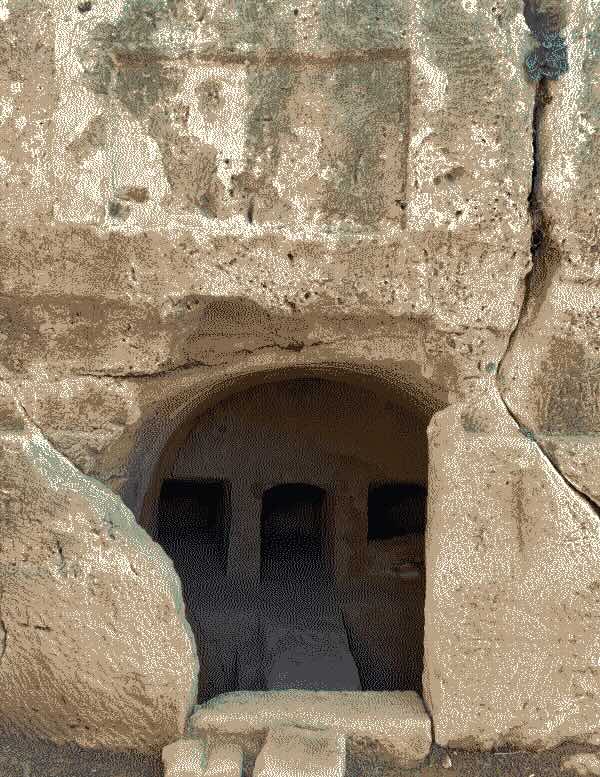
What fascinates me the most about visiting archaeological sites is how the experience deconstructs a sense of normalcy; something that can also happen with intellectual discoveries. I have experienced this first-hand in the classroom, while studying history, astronomy, or literature. But at a site, the deconstructiong of normalcy happens in a very physical way. Suddenly, I am standing at the edge of this hole in the ground, and I see doric columns below me, rising up as if holding up the rock and ground that I stand on.
To borrow a cliché, my perspective is shifted, literally. The usual rules of the game, on how to interact with a building or a space, are challenged. As much as the exposure to different narratives through books and film and conversations serves to challenge our preconceptions, there is something about movement—moving through a space and experiencing distances, heights, and depths differently—that hits home. It’s a very visceral reminder of the vastness of pretty much everything: the planet, history, culture, microbiology, outer space, which is fun to encounter on a “small” island like Cyprus.
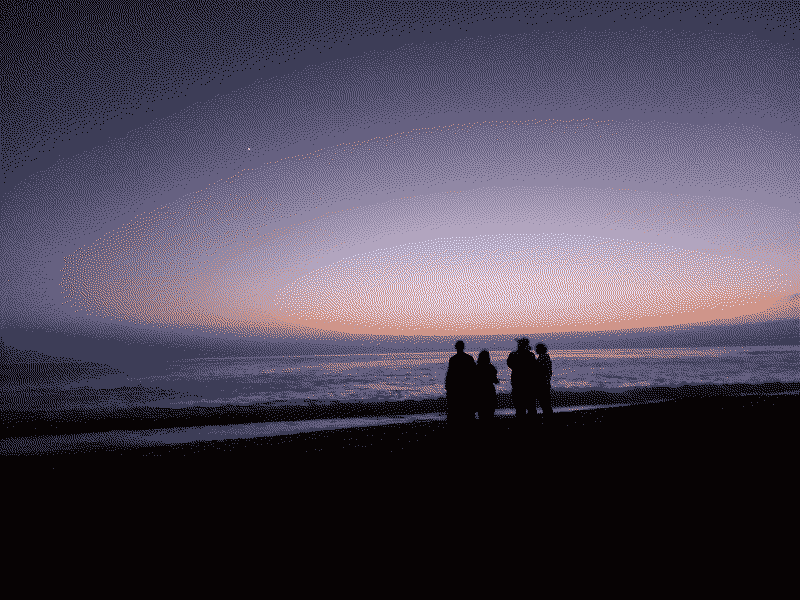
Ever since I took a history class on Salsa music and dance a few years back, I’ve been noticing how the concept of “embodiment” pops up from time to time. And if I really think about it, I had already begun to think about "embodiment" after my undergraduate capstone course on Cervantes' short stories, which feature some interesting body-centered themes.
This has been significant to me because I grew up very "mind" centered. It's interesting to think very deliberatively about what it means to be "in" a body or to be a body, especially in thinking about how movement can be an act of knowledge-making or knowledge-sharing (something we usually associate exclusively with "the mind"). And what about storytelling? I also find it interesting how controlling movement can be a powerful tool in the hands of authorities, and how encouraging certain types of movements can also foster collective myths—thinking of Youth Groups in Nazi Germany or cults that have their members do physical labor or specific types of sport. And well, there is a reason that "movement" is also used to describe social, cultural, political changes like the labor or the feminist movements.
Moving around Cyprus has been very interesting (especially without owning a car). And this visit to Paphos has definitely been a highlight of my time here. It has given me a lot to think about.
We concluded our latest mini-trip, daylight fading fast, at a curving pebbly beach, which myths tell is the birthplace of Aphrodite.
- Andrea
29.09.2024 // Wonderment at Kalopanagiotis
Paramytha, Cyprus ⬔
Only 24 hours ago we were there: tucked away in the tight valleys of the Troodos (Τρόοδος) mountains, traversing twists and turns under a brilliant blue sky and the gaze of tall pines. Villages hung from the mountainside, and one of these was Kalopanagiotis (Καλοπαναγιώτης).
Of the high highs and low lows that have characterized my first few days on Cyprus, Kalopanagiotis is literally and figuratively a very high high. The drive up from the southern coast into the mountains offers views that words do little justice to. Near Mount Olympus, the highest peak of the island, the view of the northern coast appears, and Cyprus suddenly feels small again, like when seen on a map for the first time. It is a unique feeling to reach a mountain peak and to be able see the physical constraints that the sea places on land. It’s so different from the huge, continental places I grew up in that felt boundless.
I first discovered this feeling of "boundedness" in Guadeloupe, which despite its very small size on the map felt bigger than Cyprus. I think it probably is, given the way maps distort landmasses. In any case, I still remember that feeling, on my first visit to Terre-de-Haut in the archipelago of Les Saintes, when I climbed up to the highest peak and realized that I could see the entire island from there, all around me. A few months later, I re-encountered "boundedness" in Saint Cloud. From the slopes of the Soufrière volcano, I looked out and down onto the coast on which I lived, walked, and worked everyday. While the view of the sea provides a sense of vastness that is familiar to me, seeing the long but limited coast so perfectly drawn out made the feeling of boundary visceral.
But back to Kalopanagiotis, which meant to dive back down into the earth after circling the peak of Mount Olympus. Kalopanagiotis hugs the curve of a valley that cradles a small creek lush with vegetation. Now, instead of looking down, I found myself looking up a lot, at the peaks, the sky, the buildings and streets above us. The awe of the mountain peak had given way to the intimacy of the valley.
Despite the smallness of the village, it felt like there were not enough hours in the day to stroll through its narrow roads and river paths, once, twice, thrice. Kalopanagiotis is penetrated by history, with its Byzantine artwork and archaeological remains of monasteries, baths, and water mills. At the same time, local businesses are vibrant and include a winery, artisanal stores, fusion restaurants and more. Nature, archaeology, art, and the culinary arts—I couldn’t ask for more.
But when I try to capture the wonderment that I felt, I am reminded how insufficient words often are. There is no list of attraction detailed enough to really capture that feeling.
I would have to resort to art, rather than a log entry (What’s the difference? Can’t anything be art? But there is a difference, I can feel that there is.), to piece together that joy of discovering someplace beautiful, new, and already nostalgic.
- Andrea
26.09.2024 // Halfway Across the World
Limassol, Cyprus ⬔
We arrived in Cyprus almost exactly one week ago. Today, I sit at a café in Limassol, looking out at the lively sunny street near the center of town, and I feel as if I had only just arrived. As if newly landed.
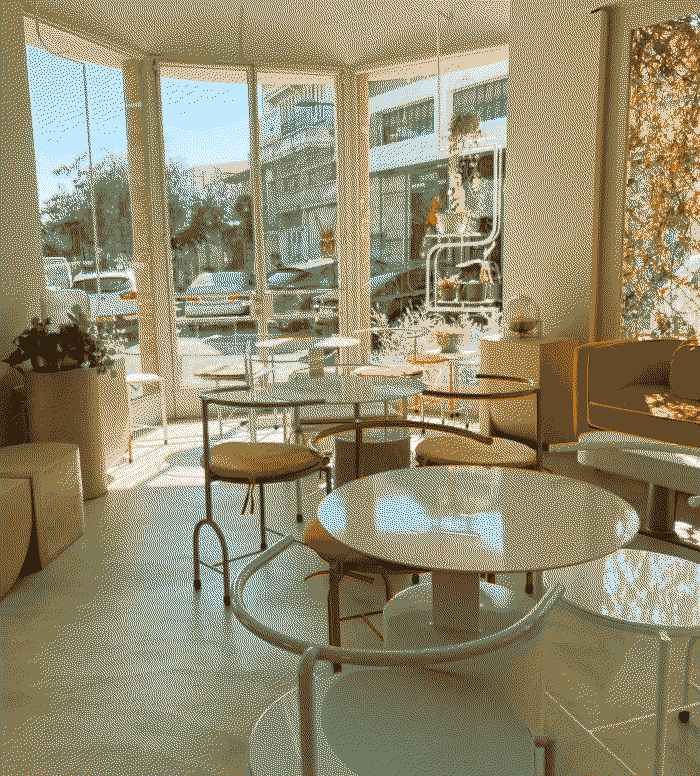
Like any change, moving always requires effort, usually new and unusual sorts of effort. After a lifetime of moving from here to there, I like to think that I have strategies in place to help me in these moments of transition. And yet, it can be hard, and it has been hard.
The countryside of a new country has special surprises, especially for city people, and I realize more and more that I am city person—despite my love for hiking and nature. Encountering sand flies for the first time, a drought for the third time this year, and challenges in transportation, all while coming down with a cold, is not too much fun. Even if we expected some challenges (like the transportation one), there's no way to sugarcoat the truth, it’s been tough.
I also realize how much I cherish self-sufficiency, which is to say my independence. Not being able to address challenges from the get-go due to feeling unwell and not knowing how things worked made me feel trapped.
And yet, things have slowly fallen into place, with some patience and initiatives to put things in order. Now, it feels like life is ready to begin again.
This experience made me reflect on some other challenging moves I've gone through, two of which were even more challenging. Moving to Paris, for one, and also Vieux-Fort in Guadeloupe (another island) tested me in more ways than one. Stockholm was also tough in the first three days, but overall, less tough than the first week of Paramytha. Even with those rough starts, I've yet to regret moving someplace new (even with new challenges that appear, like the COVID-19 pandemic while I was in Guadeloupe) and I hope this holds true for Paramytha, Limassol, and Cyprus generally.
- Andrea
02.09.2024 // Homecoming + Logging
Bogotá, Colombia ⬔
Today is our first full day back in Bogotá and this is my first log entry for Comma Directory. Today, I want to reflect a bit on how I got here, both literally and metaphorically.
We had a rough trip back from Sasaima, Cundinamarca. Two buses with aggressive drivers, getting dropped off in an unfamiliar part of the city, and then a taxi driver who fell asleep at the stop light (wishing him safety and rest). These are the realities of traveling and living in Colombia, and even more so for most Colombians living day to day, struggling to survive.
For years, my family undertook this pilgrimage from Bogotá to Sasaima, and under much rougher conditions than we did. And despite of it all, visiting my great-grandparents’ farm was one of the familiy's happiest moments of the year, for as long as it lasted.
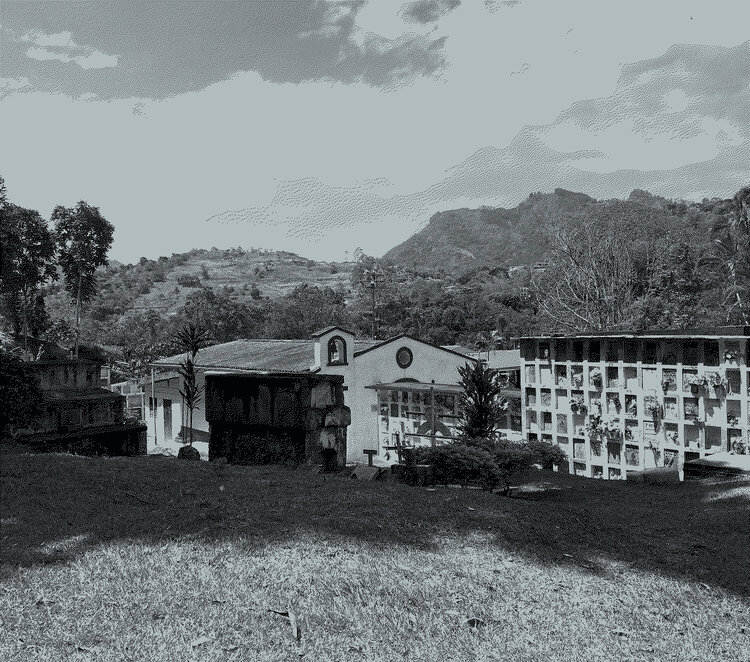
I had never been to Sasaima before, by the time I was born the voyages had ceased, my great-grandfather had already passed away.
Being able to finally go to a place that meant so much to everyone and that I have heard about since childhood was very special. Eating almojabanas at the town square, going to the plaza (market) for lunch, hiking through the surrounding mountains, eating fresh mandarinas on the trail, and meeting kind people who love their town and are proud of the land—it was a wonderful parenthesis, a welcomed contrast from the grittiness of Bogotá.
But even with all its pollution, the crime, the poverty, and the painful memories embedded into these mountains, coming back to Bogotá is coming back home. This month, I’ll leave Bogotá again and I am not sure exactly when I’ll be back—like so many of the other times I've departed, but it never stops being painful. I am excited about what is to come, it is beyond my wildest dreams, life that is. It has been that way during the past ten years. Full of new beginnings, new opportunities, but those beginnings always come paired with goodbyes and (hopefully) see you laters. A "see you later" is always an act of faith, and I am by nature faithless.
I see logging as more than a recollection of important events or thoughts, but as a way to digest and accept that duality, so integral to life. Whether one travels or not, we are all constantly starting and ending. Moments, books, trips, meals, tasks, conversations.
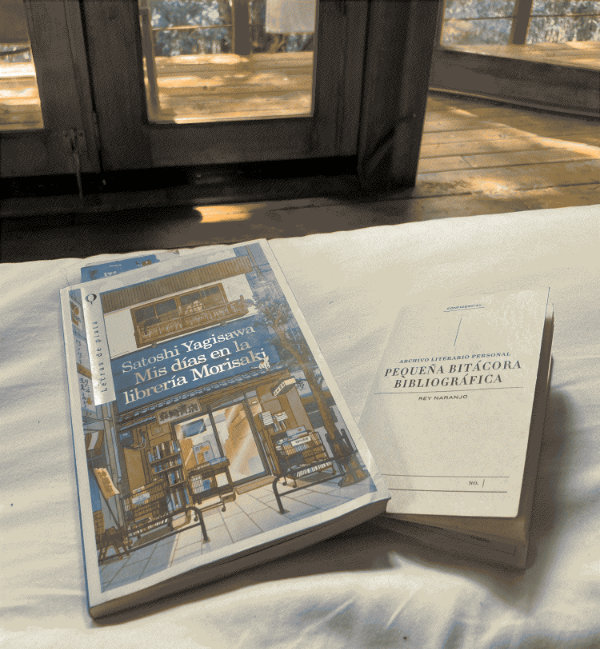
Before Comma Directory I have been logging in journals, the analog way. However, I rarely keep my journals around and I almost never have wanted to re-read my entries. Too self-conscious of my own writing, unfettered and unedited. However, recently I have made the effort to keep and complete the same journal, and also keep two additional analog logs on books and films. These logs are from the Rey Naranjo Editorial House, which is part of Bogotá’s very vibrant artistic scene. Their design is quite nice, they are compact and portable, and there’s a bit of humor and character infused into them. I’ve also managed to keep an agenda for the first time, which I bought at the beginning of the year in Oaxaca, that has also served as a nice writing space. More on writing next time.
- Andrea
25.08.2024 // Personal Database with Recutils
Bogotá, Colombia ⬔
I have begun using recutils to build a database of what I have read, watched and also for storing references on how to do things.
The tool has a decent amount of utilities for querying data and its simple formatting means that even if recutils one day stops working, it would be trivial for me to build my own replacement.
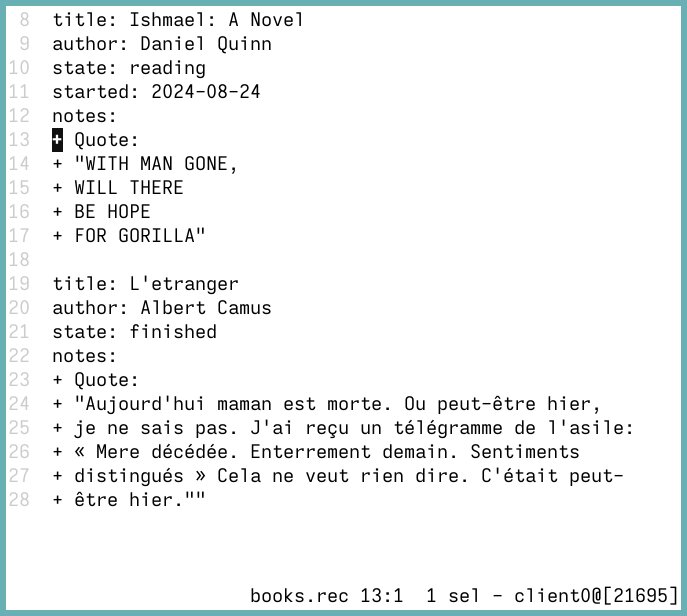
The usage becomes simple. To find all FreeBSD specific information, I can simply run the recsel -q freebsd ~/refs.rec and I will find all my Freebsd related references. I made an alias of it so I just have to type refs freebsd.
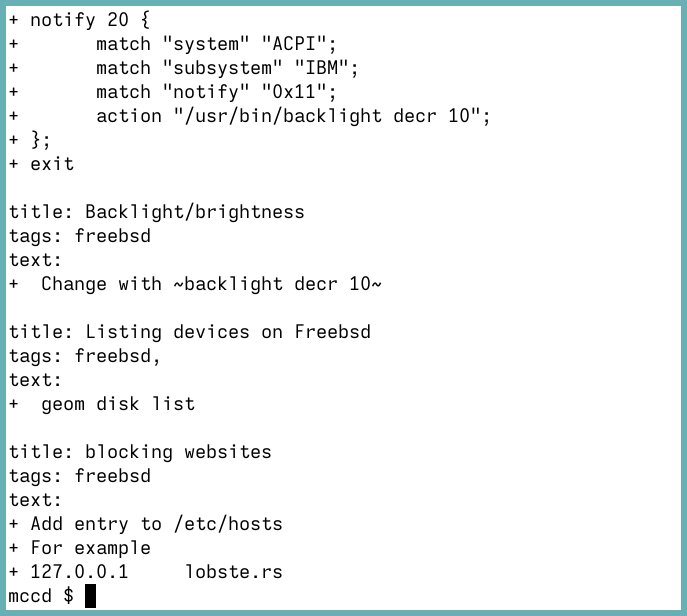
refs freebsd.- Marc
23.08.2024 // Projecting Log Entries
Bogotá, Colombia ⬔
Comma Directory tries to set up a way to separate "the facts" from the interpretation of the facts. The idea is to build up a set of log entries that over time can be projected to display a unique interpretation of a given concept.
Originally inspired by event-sourced programming, this idea also has a certain resemblance to the zettelkasten method. In zettelkasten, you build up a set of atomic notes, that you then piece together to construct a novel idea.

This process allows us to improve our understanding of our own thoughts and make sure that important ideas are grounded in a solid foundation. And if we get it wrong, we are able to reinterpret the information, without losing the raw source.
- Marc
19.08.2024 // The Comma Directory Structure
Bogotá, Colombia ⬔

Comma.directory will be built over time by composing together many small log entries. Each log entry contains observations, events, and thoughts that we label.These log entries will be the building blocks for a directory of concepts, which we will categorize for easier navigation.
When entering the page of a concept through the directory, the log entries that led up to the idea would show up and and, if the idea feels more fully explored, it might also contain a summary or conclusion.
- Marc